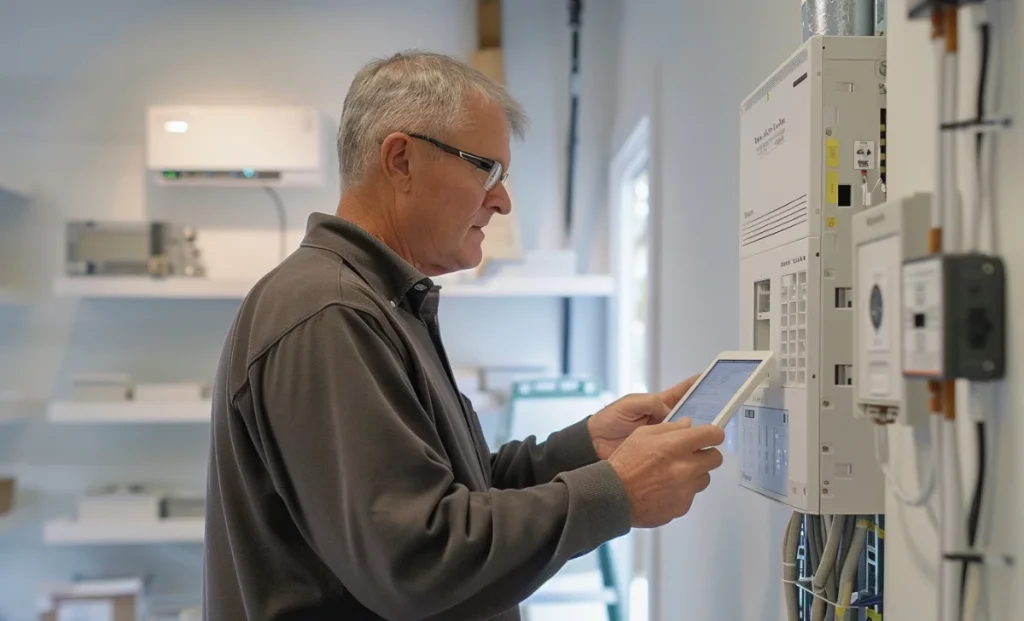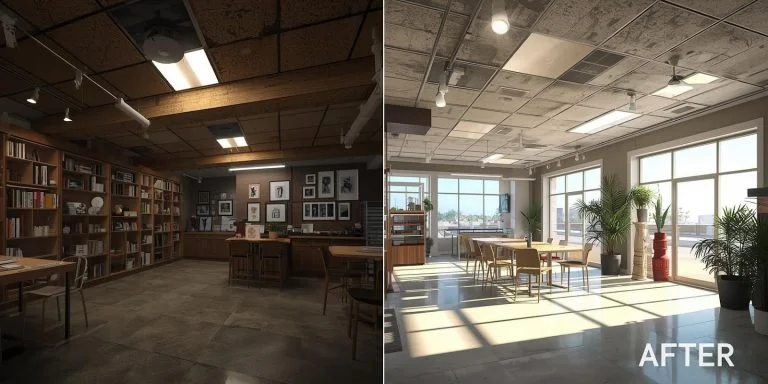Cost Effective Electrical Renovation for Small Business Owners

Key takeaways
- You can save energy dollars with some easy upgrade choices in lighting, controls and your heating, cooling and ventilation systems.
- Many small business owners begin to find out ways to save money on energy as soon as they switch to more energy efficient systems.
- A scheduled upgrade schedule helps minimize downtime as well as make your facility safer.
- Careful assessments help you determine which areas need attention first so as to not overspend.
I have perused a lot of job sites in my career, from small corner shops to busy production floors. You begin to find the same pattern after some time. People tend to avoid doing the electrical improvements until something breaks.
I get it, no one wants to spend on an upgrade that doesn’t seem urgent. But I do recall one owner who told me he was floored at the amount of energy use reduction after a simple lighting change. He mentioned he regretted not doing it much earlier. That stuck with me.
You might feel the same way. Maybe you have thought about things to save energy or reduce bills, but it has never crossed the top of the list. This may be the time to have a look at what upgrades can do for your small business after all.
Why electrical upgrades are important for your bottom line
Energy-efficient enhancements are not limited to correcting old equipment. They help you operate a more predictable and comfortable workplace. When you add improved lighting or if you have an older lighting or heating cooling system, you lower the strain on the system. Over time that reduces energy costs and results in continuous energy savings.
I have seen shops that reduced anywhere from 10 to 30 percent of their energy use without affecting their day to day activities. That range depends on how old the building is, how often the space is open and how much heating and cooling you’re dependent upon.
Energy Star reports that many commercial buildings can cut their energy use by up to 30 percent simply by improving outdated systems and correcting long-overlooked inefficiencies. Their research shows that small business facilities often achieve these savings without major interruptions to operations or expensive overhauls.
Ask yourself what is outdated about your facility. It is generally the area where upgrades have the quickest results.
Lighting upgrades that can help deliver fast results
Updating lights ranks among the easiest improvements for small companies. Most of the time you just need to replace outdated fixtures or use LED. LEDs last longer, use less power and burn cleaner than traditional bulbs. Even replacing one bulb in high use areas can make a noticeable difference.

Consider installing a sensor in an area where people forget to turn off the lights, Storage rooms, restrooms, back offices, and break rooms are quite common places. When the lights are automatically turned off by the sensor it stops wasting that you did not see before.
You may also consider daylight responsive lighting. This type of lighting system lightens or darkens depending on the amount of sunlight that is entering the space. You get uniform comfort without having to use more power than you need.
How many of your fixtures still use old lamps or mismatched bulbs? If the number is high, you already know where to start.
Improved energy efficiency HVAC and heat improvements
HVAC systems operate for a longer time than people realize. When the equipment is not tuned or updated it does more work than it needs to do. This leads to extra heat, higher power consumption and greater strain on everything.
Routine servicing helps, but there are some upgrades that help you go further with your energy efficiency. Good example of this are smart thermostats. They learn occupancy patterns and adjust the heating and cooling automatically. You save energy when the store is closed but you don’t have to check the system everyday.
You also want to look at duct sealing and better airflow. I once monitored a maintenance team who took airflow readings in a retailer building only to discover that half of the conditioned air was leaking to the ceiling space. One simple upgrade cured that problem and slashed their energy use practically overnight.
According to the National Renewable Energy Laboratory, small business owners who upgrade HVAC systems and improve building energy efficiency often see lower operating costs and more stable indoor comfort. Their findings highlight that even minor improvements in heating and cooling can produce measurable reductions in energy waste.
When you combine lighting and HVAC improvements, the results are exponential. You feel it in your monthly bills, you feel it in the comfort of your work space.
Improving the power distribution and reliability
Electrical reliability is more of an issue the larger your small business grows. Panels are outdated, circuits overheat and older wiring begins to slow you down. I have seen machines flicker and printers stall and refrigerators hum louder than they should because the electrical layout was not updated in the first place.
One little upgrade that is often overlooked is your panel. You get more stable voltage, fewer tripped breakers and safer operation. Combine this with surge guards to shield delicate devices from harm.
Professional contractors handle this kind of job most effectively. Many owners ask out service providers, such as FSG electrical construction, during this stage. They guide the process and help you to select the kinds of upgrades that enhance system performance without stretching your budget. It’s a sensible way to maintain order throughout the work.
Smart controls, automation and small upgrades that add up
Some of the upgrades are small, but powerful. A few examples:
- Timers For exterior lighting
- Power strips for offices that are programmable
- Vacancy or occupancy sensors
- Automatic dimming controls
- Easily implemented demand management schedules
One client told me he began by putting in sensors but then ended up by putting in the rest of the building, after he saw the drop in the energy use. You may not require any complex automation. Most of the time some simple settings are sufficient to save energy on a daily basis.
Look around your workplace. Which machines or lights are left on longer than they need to be? That is typically where an upgrade will pay off first.
Safety, Conformance and Sustainability
Electrical upgrades are risk reducing. Old wiring, outdated breakers and aging fixtures are unsafe hazards you won’t be able to see. You do not notice them until something is going wrong. When you refresh panels or increase the lighting quality you increase the safety and comfort to all.
These improvements are also conducive to sustainability goals. Using more energy efficient options means to have less energy to operate with the output being the same. You reduce your footprint while future proofing the building, which is useful if your customers are concerned about sustainability.
Tracking your power savings becomes simpler with updated systems. You can measure improvements directly through in bills, meters, or automated reports and
How to Choose What Upgrades to Focus on
Start with a walkthrough. You don’t require costly equipment for this. Check:
- Burned out or dim lighting
- Loud HVAC units
- Rooms that become too warm or too cold
- Flickering fixtures
- Outlets or panels that appear worn
- Any space where people complain of comfort
Then match these observations with your budget and time line. Upgrades do not have to occur simultaneously. You can do them in phases so that your small business doesn’t miss out on running stress.
If you need help setting priorities, ask your contractor to explain to you what energy savings in each upgrade can be expected. It is easier to choose to if you see real numbers.
The real life impact of upgrades
I used to work in a small production facility and we used a lot of heating in the wee hours of the morning. Their HVAC system was outdated and the lighting was a mixed blend of fluorescent and older bulbs. In this scenario, they began with an easy lighting upgrade and upgraded all the bulbs to LEDs. Then they added sensors to areas where they were often forgotten.
The owner mentioned that he saw the energy saving effect from the second month. He followed that up by an HVAC tune up and some modifications to heating and cooling. Nothing fancy though, just a steady set of improvements. By the end of the year the business had saved enough in energy to utilize in another upgrade for the next season.
That’s typically what happens. Each improvement inspires another.
What to Expect after the Upgrades
Once you are done with any upgrade, see your bills. The comparison is between three months before and after. You should also consider comfort levels, lighting brightness and equipment noise. These improvements may seem a little but they support productivity and provide a better working environment.
You might find fresh possibilities down the road. Changing lighting often results in better layout decisions. Updating an HVAC system opens up room to better filter or better zone. Upgrading panels allows for new equipment.
Upgrades rarely don’t finish with the very first project. They open the path for continuous improvement.
Frequently asked questions
What upgrade can provide the fastest results?
Lighting improvements normally offer direct improvement, especially if you convert from fluorescent to LED.
How frequently should I test my facility?
Annual service works well for most small company settings. More frequent checks facilitate if you work long hours.
Does An HVAC Tune Up Justify Its Cost?
Yes, because heating and cooling are a high percentage of energy use.
Are sensors beneficial in small spaces?
Yes, sensors keep lights from staying on in areas of low traffic,
How long do LED bulbs last?
Many last years depending on run time and quality.
Final thoughts
Electrical upgrades can help your small business save on energy costs, make your business more comfortable, and promote long term sustainability. You get cleaner lighting, better heating performance and more predictable energy use.
Small adjustments can create noticeable power reductions. When you combine upgrades over a period of time, the improvements are additive, and help your building to perform better at all levels.
If you take one step at a time and approach the process, you would see how these upgrades support your operations as well as your goals for the future. Let me know if you would like a shorter version of this article, or a version that is industry specific.

